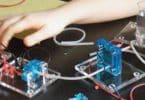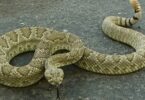Quantum numbers practice problems with answers:
Quantum numbers, Hund’s rule, Electronic configuration, Aufbau’s principle, Pauli’s exclusion principle and Shape of orbitals practice multiple choice questions.
Following Hund’s rule, which element contains six unpaired electrons
(a) Fe
(b) Co
(c) Ni
(d) Cr
The number of unpaired electrons in Mn4+ is
(a) 3
(b) 5
(c) 6
(d) 4
According to Aufbau’s principle, which of the three 4d, 5p and 5s will be filled with electrons first
(a) 4d
(b) 5p
(c) 5s
(d) 4d and 5s will be filled simultaneously
Related: Permutations and Combinations Quiz Set
p-orbitals of an atom in the presence of a magnetic field are
(a) Two fold degenerate
(b) Non degenerate
(c) Three fold degenerate
(d) None of these
Pauli’s exclusion principle states that
(a) Nucleus of an atom contains no negative charge
(b) Electrons move in circular orbits around the nucleus
(c) Electrons occupy orbitals of lowest energy
(d) All the four quantum numbers of two electrons in an atom cannot be equal
The number of unpaired electrons in nitrogen is
(a) 1
(b) 3
(c) 2
(d) None of these
How many unpaired electrons are present in cobalt [Co] metal?
(a) 2
(b) 3
(c) 4
(d) 7
The maximum number of unpaired electrons that can be present in d orbitals is
(a) 1
(b) 3
(c) 5
(d) 7
The number of unpaired electrons in an O2 molecule is
(a) 0
(b) 1
(c) 2
(d) 3
Related: health related quiz questions and answers
The total number of unpaired electrons in an atom of atomic number 29 is
(a) 1
(b) 3
(c) 4
(d) 2
The number of two electrons can have the same values of …… quantum numbers.
(a) One
(b) Two
(c) Three
(d) Four
The ground state term symbol for an electronic state is governed by
(a) Heisenberg’s principle
(b) Hund’s rule
(c) Aufbau principle
(d) Pauli exclusion principle
Consider the ground state of (Z = 24). The numbers of electrons with the azimuthal quantum numbers, l = 1 and 2 are, respectively
(a) 16 and 4
(b) 12 and 5
(c) 12 and 4
(d) 16 and 5
The number of 2p electrons having spin quantum number s = – ½ are
(a) 6
(b) 0
(c) 2
(d) 3
Related: Diversity of Life Biology Test Quiz
The outer electronic structure 3s2 3p5 is possessed by
(a) Cl
(b) O
(c) Ar
(d) Br
Azimuthal quantum number defines
(a) e/m ratio of electrons
(b) Spin of electron
(c) Angular momentum of electron
(d) Magnetic momentum of electron
Quantum numbers of an atom can be defined on the basis of
(a) Hund’s rule
(b) Aufbau’s principle
(c) Pauli’s exclusion principle
(d) Heisenberg’s uncertainty principle
The magnetic quantum number of the valence electron of sodium (Na) is
(a) 3
(b) 2
(c) 1
(d) 0
What is the maximum number of electrons which can be accommodated in an atom in which the highest principal quantum number value is 4
(a) 10
(b) 18
(c) 32
(d) 54
Related: MCQs on Protista
An e– has a magnetic quantum number as –3. What is its principal quantum number?
(a) 1
(b) 2
(c) 3
(d) 4
If n + l = 6, then the total possible number of subshells would be
(a) 3
(b) 4
(c) 2
(d) 5
Which quantum number will determine the shape of the subshell?
(a) Principal quantum number
(b) Azimuthal quantum number
(c) Magnetic quantum number
(d) Spin quantum number
For the n = 2 energy level, how many orbitals of all kinds are possible?
(a) 2
(b) 3
(c) 4
(d) 5
The Azimuthal quantum number for the last electron of Na atom is
(a) 1
(b) 2
(c) 3
(d) 0
Related: Structure of Atom Important Questions
A 3p orbital has
(a) Two spherical nodes
(b) Two non-spherical nodes
(c) One spherical and one non-spherical nodes
(d) One spherical and two non-spherical nodes
The number of possible spatial orientations of an electron in an atom is given by its
(a) Spin quantum number
(b) Spin angular momentum
(c) Magnetic quantum number
(d) Orbital angular momentum
There is no difference between a 2p and a 3p orbital regarding
(a) Shape
(b) Size
(c) Energy
(d) Value of n
The azimuthal quantum number is related to
(a) Size
(b) Shape
(c) Orientation
(d) Spin
The total number of electrons that can be accommodated in all the orbitals having principal quantum number 2 and azimuthal quantum number 1 is
(a) 2
(b) 4
(c) 6
(d) 8
When the azimuthal quantum number has a value of l = 1, the shape of the orbital is
(a) Unsymmetrical
(b) Spherically symmetrical
(c) Dumb-bell
(d) Complicated
The principal quantum number represents
(a) Shape of an orbital
(b) Distance of electron from nucleus
(c) Number of electrons in an orbit
(d) Number of orbitals in an orbit
How many electrons can be fit into the orbitals that comprise the 3rd quantum shell n = 3
(a) 2
(b) 8
(c) 18
(d) 32
When the azimuthal quantum number has a value of l = 0, the shape of the orbital is
(a) Rectangular
(b) Spherical
(c) Dumbbell
(d) Unsymmetrical
Related: quiz on mental health awareness
For n = 3 energy level, the number of possible orbitals (all kinds) are
(a) 1
(b) 3
(c) 4
(d) 9
When the 3d orbital is complete, the new electron will enter the
(a) 4p-orbital
(b) 4f-orbital
(c) 4s-orbital
(d) 4d-orbital
Pauli’s exclusion principle states that
(a) Two electrons in the same atom can have the same energy
(b) Two electrons in the same atom cannot have the same spin
(c) The electrons tend to occupy different orbitals as far as possible
(d) None of the above
The number of radial nodes of 3s and 2p orbitals are respectively.
(a) 2, 0
(b) 0, 2
(c) 1, 2
(d) 2, 1
The angular momentum of an electron depends on
(a) Principal quantum number
(b) Azimuthal quantum number
(c) Magnetic quantum number
(d) All of these
The maximum energy is present in any electron at
(a) Nucleus
(b) Ground state
(c) First excited state
(d) Infinite distance from the nucleus
The number of orbitals in the fourth principal quantum number will be
(a) 4
(b) 8
(c) 12
(d) 16
Related: probability questions and answers
The two electrons in the K sub-shell will differ in
(a) Principal quantum number
(b) Azimuthal quantum number
(c) Magnetic quantum number
(d) Spin quantum number
The total number of unpaired electrons in d- orbitals of atoms of element of atomic number 29 is
(a) 10
(b) 1
(c) 0
(d) 5







this was helpfull for me